1. Educational Psychology Woolfolk, A. (2017). Educational Psychology: Active Learning Edition, 13th Edition. [Bookshelf Online]. Retrieved from https://online.vitalsource.com/#/books/9781323617731/
1.1. Ch 11-
1.1.1. Albert Bandaranaike-social cognitive theory. Enactive learning is through reinforcement and punishment of own behaviors.
1.1.2. Triarchic Reciprocal Causality- Environment, behavioral and personal factors
1.1.2.1. Constant interaction
1.1.3. Modeling
1.1.4. Observational Learning-(five possible outcomes) encouraging existing behaviors, changing inhibitions, teaching new behaviors and attitudes, and arousing emotions
1.1.5. Self-efficacy-content specific, ones own judgment of competence
1.1.5.1. mastery experiences, level of arousal as you face the task, vicarious experiences, and social persuasion
1.1.5.2. Greater efficacy equals greater effort
1.1.5.3. Teacher sense of efficacy comes from real success in practice
1.2. Ch. 12
1.2.1. Motivation is an integral state that arouses, maintains and directs behaviors
1.2.2. Intrinsic motivation- from within self
1.2.3. Extrinsic Motivation- from outside sources
1.2.4. 5 general approaches to motivation
1.2.5. Maslow Hierarchy of Needs-survival, safety, belonging and self-esteem
1.2.6. Self determination theory-
1.2.6.1. Need for competence- feeling accomplished, build self efficacy
1.2.6.2. Autonomy- need to have our own wishes dictate actions
1.2.6.3. Relatedness- desire to belong
1.2.7. Information and control
1.2.7.1. Cognitive evaluation theory
2. Strategies for Increasing Student Motivation ...Nilson 2010, Teaching At It’s Best
2.1. Your persona- delivery, make meaning, get to know your students
2.2. Your course- develop with care, give your students a voice
2.3. Your teaching- explain, make connections to other subject areas, use inquiry, cooperative learning, high expectations
2.4. Assignments and Tests- in control of their own improvement and practice, time to reflect, give constant feedback, use multiple measures of assessment
2.5. Equity in the Classroom - safe environment, equal attention, multiple learning styles, sensitive to different needs
3. Give students control of their learning
4. Jensen, E. (20050601). Teaching with the Brain in Mind, 2nd Edition. [Bookshelf Online]. Retrieved from https://online.vitalsource.com/#/books/9781416615002/
4.1. Chapter 3
4.1.1. Engagement
4.1.1.1. Not a requirement, its priming to set stage for learning
4.1.1.2. Meaning to learning, glucose levels, threat response, brevity, use of attention getters, amine activation, balance in learning
4.1.2. Repetition
4.1.2.1. Pre-exposure- preparing students
4.1.2.2. Previewing- explicit exposure
4.1.2.3. Priming minutes before Instruction
4.1.2.4. Reviewing- going over
4.1.2.5. Revising is reconstructing learning that already occurred
4.1.3. Input Quantity
4.1.3.1. Allow for personal processing time. Give info and then give time for it to settle
4.1.4. Coherence
4.1.4.1. Prior Knowledge
4.1.4.1.1. Connections in the brain, enhances learning by adding “branches to the knowledge tree”
4.1.4.2. Mental Models
4.1.4.2.1. Existing understanding that is formed and reformed
4.1.5. Timing
4.1.5.1. Moods and brain rhythms
4.1.5.2. Hormones and cognition
4.1.5.3. Tolerance, activity shifts, movement, scheduling, testing
4.1.6. Error Correction
4.1.6.1. Model building. Peer editing. Doing a gallery walk. Pair-sharing. Using spell-check functions. Conducting student presentations with audience feedback. Playing competitive games. Using a video, audiotape, or mirror. Doing author’s chair or fishbowl processes. Using a checklist or rubric to evaluate performance.
4.1.7. Emotional States
4.1.7.1. Positive and negative
4.1.7.2. Risk, excitement, urgency, pleasure
4.2. Chapter 8
4.2.1. Demotivation- lack of relationships, drug use, threats, helplessness irrelevance
4.2.2. Rewards- simple task yield stimulation with rewards, not true for complex tasks
4.2.2.1. Brain can make own rewards through natural highs.
4.2.3. Activating intrinsic motivation
4.2.4. SuperCamp
4.2.4.1. Creates emotional bridges to learning
4.2.4.2. Getting ready to learn time- establishing routines for safe learning, personal and academic feedback
5. Motivating Students-Vanderbilt University
5.1. Intrinsic Motivation- interest in subject, sense of relevance, accomplishment
5.2. Extrinsic Motivation- earning potential, grades, expectations form parents or models
5.3. Extrinsic rewards can have a negative effect on intrinsic motivation
5.4. Effects of Motivation on Learning Styles-
5.4.1. Deep learners- respond well to challenges, intrinsically motivated
5.4.2. Strategic learners- motivated by rewards, learn what they need to and then dump the info
5.4.3. Surface learners- avoid failure, see deep learning as a fish, need to be encouraged, reflect on what was learned and accomplished
5.5. A Model of Intrinsic Motivation
5.5.1. Stimulating and offer personal control
5.6. Strategies
5.6.1. Be a role model of enthusiasm of learning
5.6.2. Cooperative learning
5.6.3. Teach by discovery
5.6.4. Get to know students
5.6.5. Goals
5.6.6. Praise and provide constructive criticism
5.7. Show appeal
5.7.1. Provide cues that show the topic is appealing and interesting
6. Article 1- Classrooms: Goals, Structures and Student Motivation
6.1. Achievement Goals-
6.1.1. Task.ego involvement goals
6.1.1.1. Focus on ability and self worth
6.1.2. Mastery and performance goals
6.1.2.1. Amount of time spent
6.2. Classroom Structures
6.2.1. Task design
6.2.2. Evaluation and Recognition
6.2.3. Authority
6.3. Student Perceptions -
6.3.1. Approaches to processes
6.4. Classroom Interventions
6.4.1. Make changes to enhance mastery goal orientation
6.4.2. Quantitative and Qualitative Changes
6.4.2.1. Higher achievement, time on task
6.4.2.2. Self confidence and self esteem
7. Article 2- Motivating Students: What Teachers Need to Know
7.1. Foremost problem in education that cannot be gaged on achievement
7.2. Intensity, duration and direction of behavior... RATHER
7.2.1. Quality of task engagement, goals and reasons for learning, optimizing motivation
7.3. Constructs
7.3.1. Self worth
7.3.1.1. Praise efforts
7.3.2. Attributional and related meta cognitive beliefs
7.3.2.1. Goal-setting, self monitoring, self instruction
7.3.3. Achievement goals
7.4. Enhancing Motivation
7.4.1. If a student lacks confidence we need to give them smaller doses to celebrate the little progress.
7.4.2. Positive feedback praising the effort, but also paying attention to the child’s developmental needs
7.4.3. Rather than an overload of extrinsic rewards, focus on engagement and interests
7.4.4. Personal control of learning to enhance intrinsic motivation
7.5. Context of Motivation
7.5.1. Concerns: task, authority, time, recognition, evaluation, grouping
7.5.1.1. Don’t seclude this to one area in the classroom.
7.5.1.1.1. Motivation is an outcome that is important all the time in every area.
